The concept of wind power is not a new one. For centuries, people have harnessed the power of wind to sail ships and grind grains. But now, in the face of a rapidly changing climate, wind power has become more important than ever before. Burning fossil fuels for energy releases large amounts of carbon dioxide and other greenhouse gases, which contribute to the warming of our planet. This warming, in turn, leads to more extreme weather events, melting glaciers and rising sea levels, all of which threaten the health and well-being of our planet and its inhabitants.
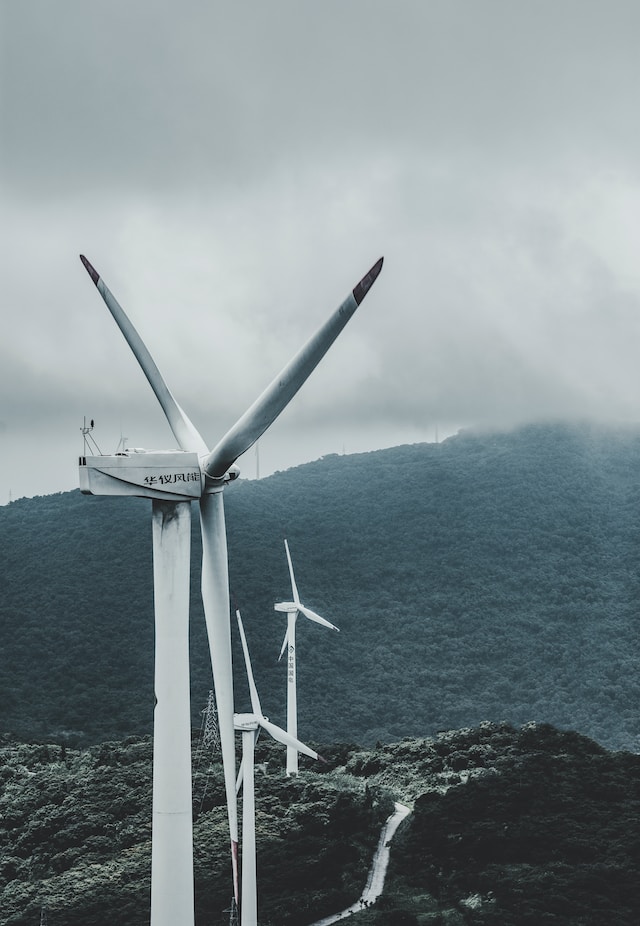
However, wind power provides a clean, renewable and sustainable source of energy that releases no harmful emissions into the atmosphere, making it a valuable tool in our fight against climate change.
Understanding Wind Power
Wind energy is essentially the transformation of the kinetic energy present in wind into usable electrical energy through the employment of wind turbines. These towering structures, often adorned with sleek blades, are designed to catch the wind and convert its movement into rotational energy. This rotational energy is then transformed into electrical power by a generator housed within the turbine. By understanding the fundamentals of the wind’s potential, we can grasp the remarkable science behind wind power.
Factors Influencing Wind Power
Wind Speed and Turbulence
The velocity of wind is crucial to the efficiency of wind turbines. Higher wind speeds typically imply increased power generation. Additionally, turbulence can affect the turbine’s performance, as sudden changes in wind direction or gusts can strain the system. Pioneering research in aerodynamics and engineering has led to the development of turbines that can adapt to varying wind conditions.
Turbine Size and Design
The size and design of a wind turbine play essential roles in capturing the wind’s energy. Larger turbines generally have greater power output potential, as they can utilize a larger sweep area to capture more wind. Innovative engineering has enabled the creation of turbines with taller towers and longer blades, maximizing their energy conversion capabilities.
The Environmental Benefits of Wind Power
- Clean and Sustainable Energy
Wind energy is inherently environmentally friendly, providing a clean and renewable alternative to fossil fuels. Unlike power plants fueled by coal, oil, or natural gas, wind turbines do not release harmful greenhouse gases or pollutants, contributing to the reduction of air pollution and the mitigation of climate change. By embracing wind power, we can create a healthier and more sustainable future for our planet.
- Preserving Natural Resources
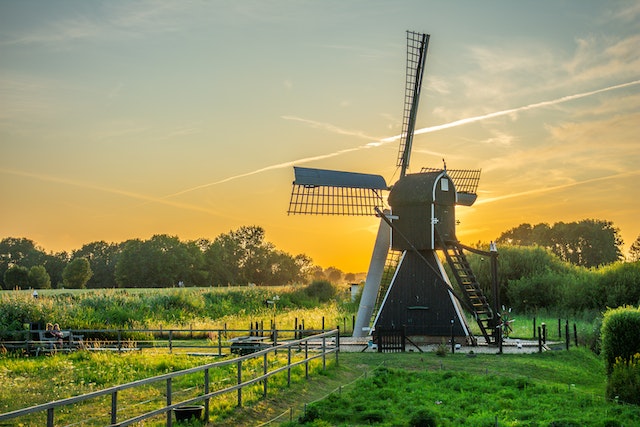
Wind energy offers a remarkable advantage over resource-intensive energy extraction methods. Unlike coal mining or oil drilling, harnessing the wind requires no destructive extraction processes.
By utilizing wind power, we can conserve precious natural resources and reduce the ecological footprint associated with conventional energy production.
Wind Power’s Role in Reducing Greenhouse Gas Emissions
Wind energy is a powerful tool in our mission to reduce greenhouse gas emissions. By harnessing the natural energy of the wind, we can generate electricity without burning fossil fuels, ultimately helping to combat climate change. In this section, we will explore the significant ways in which wind power contributes to the reduction of greenhouse gas emissions.
Carbon-free Generation
Wind energy offers a carbon-free method of generating electricity. Unlike traditional power plants that rely on the combustion of fossil fuels, wind turbines convert the kinetic energy of the wind into electrical energy without producing any harmful emissions. This means that wind power can replace fossil fuel-based electricity generation, resulting in significant reductions in carbon dioxide and other greenhouse gas emissions.
Renewable and Sustainable
The use of wind energy promotes the transition to renewable and sustainable energy sources. Fossil fuels are finite resources, and their extraction and consumption contribute to environmental degradation.
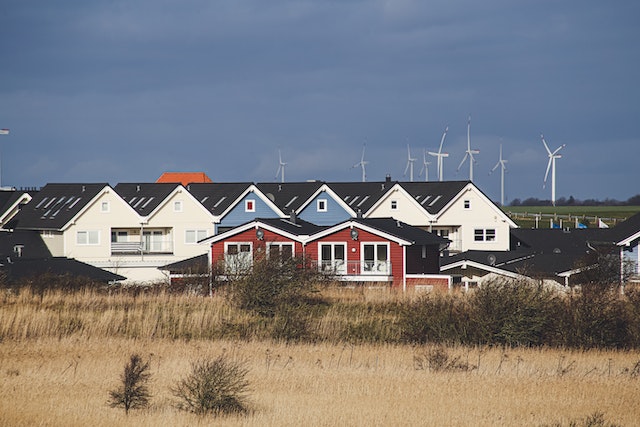
By embracing wind power, we can tap into an abundant and naturally replenished resource, reducing our reliance on fossil fuels and promoting a more sustainable energy future.
Offsetting Emissions from Other Sectors
Wind energy can also play a crucial role in offsetting emissions from other sectors. By generating clean electricity, wind power can be integrated into the grid and used to replace power generated by coal-fired power plants or other high-emission sources. This substitution helps to reduce the overall carbon footprint of our energy systems.
Scalability and Potential
The scalability of wind power makes it an attractive option for reducing greenhouse gas emissions on a large scale. Wind farms can be expanded and new turbines can be installed as technology improves and costs decrease. This scalability, coupled with the potential for offshore wind farms, has the capacity to make a significant impact on global greenhouse gas emissions.
The Global Wind Energy Landscape
Wind energy has gained significant traction across the globe as countries recognize the urgent need to transition to clean and renewable energy sources. In this section, we will explore the global wind energy landscape, highlighting key countries, advancements in technology, and the potential for future growth.
China’s Dominance in Wind Power
China has emerged as the world leader in wind power generation, with an impressive installed capacity that far surpasses that of any other nation. The Chinese government’s commitment to renewable energy has resulted in a rapid expansion of wind farms across the country. From the vast plains of Inner Mongolia to the coastal regions, China’s wind power industry has experienced substantial growth, contributing significantly to their clean energy goals.
Europe’s Pioneering Efforts
European countries have long been at the forefront of wind energy development. Nations such as Germany, Denmark, and Spain have invested heavily in wind energy infrastructure, supporting research and development to optimize turbine performance and efficiency. Their commitment to renewable energy has not only reduced carbon emissions but has also created jobs and stimulated economic growth.
The United States’ Expanding Wind Market
In recent years, the United States has seen a remarkable expansion in its wind energy sector. The country ranks second in the world in installed wind capacity, with states like Texas, Oklahoma, and Iowa leading the way in wind power generation. Advances in turbine technology, coupled with federal and state-level incentives, have paved the way for the rapid growth of wind farms across the American landscape.
Technological Advancements and Innovations
Offshore Wind Farms
Offshore wind farms have emerged as a promising frontier in wind energy development. These projects harness the powerful and consistent winds found at sea, offering immense potential for clean energy generation. Countries like the United Kingdom, Denmark, and the Netherlands have invested heavily in offshore wind farms, capitalizing on their geographical advantage. Continued advancements in offshore turbine technology and reduced costs are expected to spur further growth in this sector.
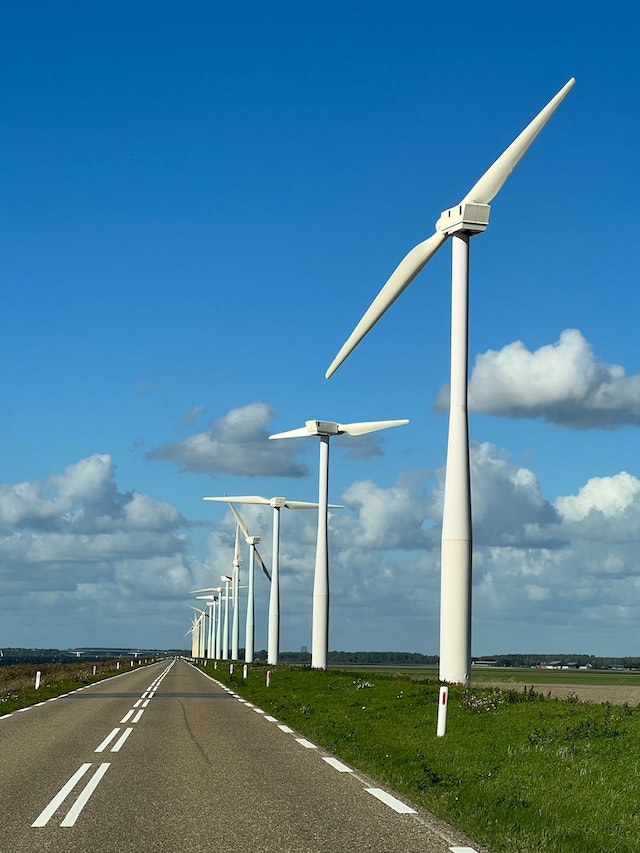
Floating Wind Turbines
Another exciting technological advancement in wind energy is the development of floating wind turbines. Unlike traditional fixed turbines that require a solid foundation, floating turbines can be deployed in deep waters, opening up vast new areas for wind energy utilization. This innovation has the potential to unlock wind power generation in previously untapped regions, such as the open ocean. Countries like Norway, Scotland, and Japan are at the forefront of floating wind turbine research and development.
Future Growth and Potential
While developed nations lead in wind energy generation, developing countries are also making strides towards a cleaner energy future. Countries like India and Brazil have significantly increased their wind power capacity, driven by a combination of energy needs, renewable energy targets, and economic growth. As technology continues to improve and costs decrease, it is expected that many more developing nations will embrace wind power as a sustainable energy solution.
One of the challenges of wind energy is its intermittent nature. However, advancements in energy storage technologies, such as batteries and grid-scale storage systems, provide opportunities to overcome this hurdle. Energy storage allows for the capture and storage of excess wind energy during periods of low demand, making it available for use when the wind is not blowing. This integration of energy storage has the potential to increase the reliability and effectiveness of wind power, further driving its adoption on a global scale.
Wind Power and Energy Resilience
In a world facing increasing uncertainties, energy resilience has become a pressing concern. The ability to withstand and recover from disruptions in energy supply is a critical factor in ensuring the stability and sustainability of our societies. Wind energy, with its inherent characteristics, has the potential to contribute significantly to energy resilience. In this section, we will explore how wind power can enhance the resilience of our energy systems.
- Diversification of Energy Sources
One of the key aspects of energy resilience is diversification. Relying on a single energy source leaves us vulnerable to disruptions, whether they be natural disasters, geopolitical tensions, or technological failures. Wind power provides an opportunity to diversify our energy mix. By integrating wind farms into our existing energy infrastructure, we can reduce our dependence on fossil fuels and create a more balanced and resilient energy system.
- Distributed Generation

Another critical element of energy resilience is the decentralization of energy generation. Traditional power systems are built around large centralized power plants, which can be more susceptible to disruptions. Wind power, with its modular nature, allows for distributed generation. By installing wind turbines across a broad geographic area, we can ensure that energy production is spread out, reducing the risk of single points of failure and increasing the overall resilience of the system.
- Community-Based Wind Energy
The concept of community-based wind energy takes the idea of distributed generation even further. It involves the development of wind farms that are owned and operated by local communities or cooperatives. This approach not only promotes renewable energy but also empowers communities by providing them with a stake in the energy production process. Community-based wind projects can enhance energy resilience by ensuring that power generation remains in the hands of the local population, making them less vulnerable to external disruptions and empowering them to respond effectively to any challenges that may arise.
- Microgrids and Wind Power
Microgrids are self-contained energy systems that can operate independently from the main power grid. They are designed to provide energy resilience to specific areas, such as remote communities or critical infrastructure facilities. Integrating wind power into microgrid systems can enhance their effectiveness and resilience. Wind turbines can provide a consistent and renewable energy source, reducing the reliance on diesel generators or other fossil fuel-based backup systems. This combination of wind power and microgrids allows for a more decentralized and resilient energy infrastructure.
- Grid Integration and Energy Storage
To ensure a reliable and resilient energy system, wind power needs to be effectively integrated into the grid. This requires the deployment of advanced grid infrastructure and the development of smart grid technologies. By improving grid integration, we can optimize the use of wind power and balance its intermittent nature with other sources of energy. Additionally, energy storage technologies, such as batteries or pumped hydro storage, can further enhance the resilience of wind power by storing excess energy during times of high production and making it available during periods of low wind speeds.
The future of wind power is filled with promise, as technological advancements, supportive policies, and international cooperation continue to drive its growth. Overcoming challenges such as storage, grid integration, and environmental considerations will be crucial for realizing wind power’s full potential. With sustained commitment and collaborative efforts, wind power has the capacity to play a significant role in ensuring a sustainable and resilient future for generations to come.
Potential Challenges
As with any form of technology, wind power is not without its challenges. While it offers immense potential for clean and renewable energy generation, there are a few key obstacles that need to be addressed for its widespread adoption. In this section, we will explore some of the potential challenges associated with wind power and discuss possible solutions.
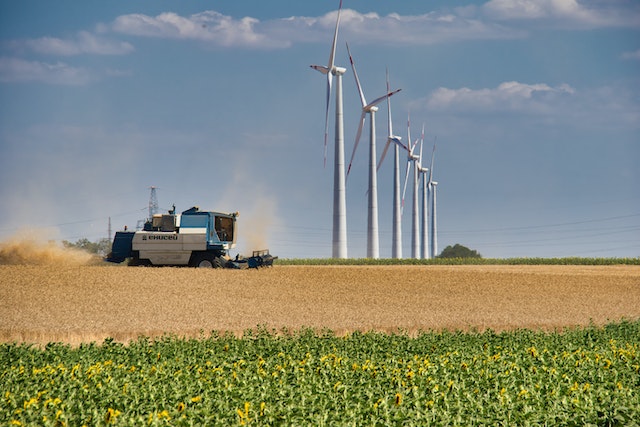
Intermittency and Grid Integration:
- Wind power is inherently intermittent, as it relies on the presence of wind to generate electricity. This variability can pose challenges for grid integration, as the supply of electricity may not always match the demand.
- To overcome this challenge, advancements in energy storage technologies, such as batteries and grid-scale storage systems, need to be developed. These systems can store excess energy during periods of low demand and release it during times when the wind is not blowing.
Land and Infrastructure Requirements:
- Wind farms require large areas of land to install the turbines, which can sometimes lead to conflicts with other land uses, such as agriculture or conservation.
- Innovative solutions, such as offshore wind farms or the use of floating turbines, can help alleviate the land constraint issue. Additionally, careful planning and engagement with local communities can lead to more harmonious land use arrangements.
Environmental Considerations:
- While wind power itself is considered environmentally friendly, there are some concerns regarding its impact on bird and bat populations, as well as the visual impact of turbines on the landscape.
- Thorough environmental assessments and mitigation strategies can help minimize these concerns. For example, proper siting of wind farms, turbine designs that are bird and bat-friendly, and the use of radar systems to detect and mitigate bird collisions.
Technological Advancements and Cost:
- The development of advanced and efficient wind turbine technology is crucial for the long-term success of wind power. Continued research and development can help improve turbine efficiency, noise reduction, and overall reliability.
- Additionally, while the cost of wind power has significantly decreased in recent years, it is still essential to continue reducing costs to make wind power more economically competitive with other forms of energy generation.
Despite these potential challenges, wind power remains a promising and vital component of our renewable energy future. With ongoing technological advancements, supportive policies, and collaborative efforts, the obstacles can be overcome, ensuring a more sustainable and resilient energy system for generations to come. By addressing these challenges head-on, we can unlock the full potential of wind power and accelerate the transition to a clean energy future.


